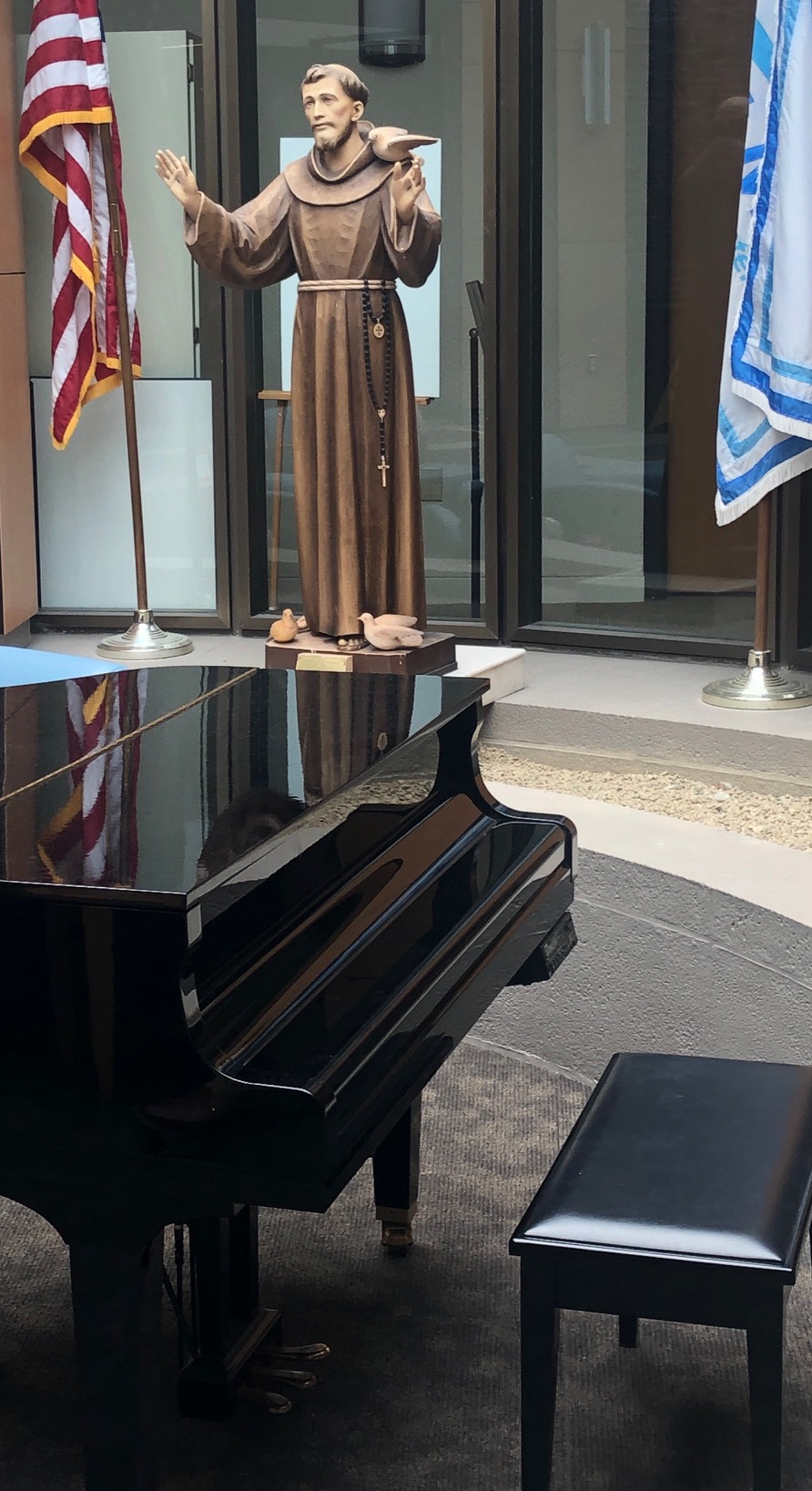
Music speaks what cannot be expressed, soothes the mind, and gives it rest, heals the heart and makes it whole, flows from heaven to the soul.
Author Unknown
During the holiday season in 2022, I wrote about “Angelo’s Harp.” Angelo De Lorenzo was a chaplain at St. Mary Medical Center in Langhorne, PA. He was also a talented harpist. Christmas time would find him playing many of the holiday favorites on his beautiful harp. But he wasn’t the only Music Therapist on site.
Before I introduce Candi, who was our organist and pianist, I want to talk a bit about Music Therapy. Its long been known that music affects people. Fast-paced music can make you want to dance or march. Slower paced music can put you in a reflective mood. Many of us have our go-to play lists that help us work, workout, study, or even drift off to sleep. Music Therapy is a relatively recent approved form of therapeutic treatment. According to the American Psychological Association (APA, 7th edition) music therapy is a “clinical and evidence-based use of music interventions to accomplish individualized goals within a therapeutic relationship by a credentialed professional who has completed an approved music therapy program.”
Music therapy interventions can address a variety of healthcare and educational goals. Angelo DeLorenzo saw that firsthand. “I have about two hours of music I can play,” he said once. Showtunes, classical pieces, operatic and pop selections were part of his repertoire. He said, “It is a beautiful sight to see patients with Alzheimer’s or dementia tapping their toes or fingers to the beat of tunes they still recognize.”
When the Healing Environments program was in operation at St. Mary, Candi played the piano in the lobby on Tuesdays. She would also play the organ in the hospital chapel and her music was piped into patients’ rooms. Her music played in the lobby was often remarked upon. What makes her contribution even more remarkable is the fact that Candi is blind. But her deep love of music and joy in sharing it inspired everything she did. Visitors would often seek her out and thank her for contributing to the joyful welcome her music provided.
One woman had spent a difficult day visiting with her mother, who was near death. As she was leaving for the day, she heard Candi’s music and decided to sit for a while in the lobby to listen. After one selection, the woman approached Candi and said, “I feel you were sent by my mother, also a great lover of music, to ease my grief. Your music deeply touched my heart.”
If you want to know more about music therapy, contact the Music Therapy Association. Their website can give you information on the benefits, uses, and careers in music therapy. Their website address is www.musictherapy.org.
